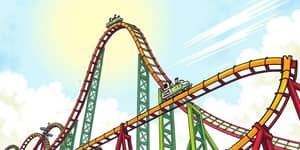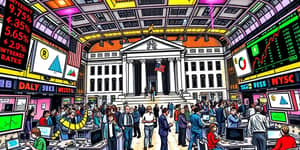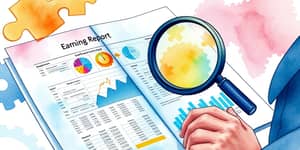
The global economy after 2020 has entered a new phase of complex, interconnected challenges. From sluggish growth projections to evolving policy landscapes, businesses and policymakers must navigate an era of uncertainty and transformation.
Global GDP growth forecasts have consistently fallen below pre-pandemic averages. The IMF’s latest outlook projects growth of 3.3% for 2025 and 2026, while Morgan Stanley sees a deceleration to 2.9% in 2025 and 2.8% in 2026—the slowest pace since the pandemic. Even more pessimistic, UNCTAD expects global growth to dip to 2.3% in 2025, below the threshold that historically signals recession concerns.
Regional performance remains uneven. The United States has enjoyed upward revisions, partly driven by consumer resilience and fiscal support. In contrast, China and the Eurozone face mounting deficits as they boost fiscal spending to prop up growth. Japan, meanwhile, continues to wrestle with a secular decline due to demographic contraction.
Economic volatility is heightened by policy unpredictability. The Economic Policy Uncertainty Index reached its highest levels this century in early 2025, reflecting deep global unease. Similarly, the VIX “fear index” for U.S. equities hit its third-highest level on record in April 2025, surpassed only by the 2008 crisis and the initial COVID-19 shock.
Trade policy shifts have introduced structural shocks to markets. Newly imposed tariffs by major economies have constrained demand, elevated costs, and fueled further uncertainty. Analysts warn that even if tariffs were rolled back, previous growth trajectories would be difficult to restore, and renewed escalations could trigger a global downturn.
Inflationary pressures, which peaked during the pandemic aftermath, are gradually easing. Global inflation is projected to decline to 2.1% in 2025 and 2.0% in 2026, with exceptions in certain regions. The ECB reports core inflation at 2.3% in May 2025, signaling the tail end of the recent price surge.
Central banks have pivoted sharply since 2020. The U.S. Federal Reserve transitioned from ultraloose to restrictive policy to tame inflation and cool an overheated labor market. By contrast, the ECB and other major banks have begun easing rates to stimulate weak demand. Meanwhile, governments are embracing fiscal expansion: Germany, for example, is running its highest deficit since 1990 to fund infrastructure and defense, ushering in a new era of sustained public spending.
Aging populations and shrinking workforces pose significant challenges. Japan’s fertility rate has fallen to 1.15, with a one-year population loss nearing one million. Advanced economies face rising dependency ratios that strain social safety nets and public finances.
Despite these adaptations, long-term projections indicate labor force declines in key markets, underscoring the urgency of comprehensive workforce strategies.
Rampant deficits are now a defining feature of many developed economies. While government spending on infrastructure, healthcare, and defense has bolstered growth prospects, it also raises questions about debt trajectories. The balance between immediate stimulus and long-term sustainability is delicate, as excessive borrowing may crowd out private investment and constrain future fiscal flexibility.
Moving forward, policymakers must design frameworks that support growth without compromising creditworthiness. This includes prudent debt management, targeted revenue measures, and reforms to entitlements that align demographic realities with public finance capacity.
Global trade has lost momentum in the wake of trade policy rifts and post-pandemic coordination failures. Tensions among major blocs—particularly US-EU and US-China—have injected uncertainty into border policies and tariffs, dampening export orders and investment plans.
In response, firms are diversifying production bases and stockpiling critical inputs to build resilience. Strategies such as nearshoring and multi-sourcing are reshaping traditional supply networks, while digitalization and automation reduce reliance on labor-intensive processes.
Beyond macroeconomic indicators, structural themes are rewriting the rules of global markets. Technological acceleration—spanning AI, automation, and digital platforms—is creating both opportunities and competitive pressures. Meanwhile, energy transition and decarbonization have become central to policy agendas, as resource scarcity and climate commitments drive investment flows.
Social resilience is equally vital. Investments in healthy aging, gender inclusion, and migrant integration not only address labor shortages but also foster inclusive growth. At the same time, downside risks—including renewed inflation spikes, financial market stress, and fiscal crises—loom large, demanding robust risk management frameworks.
The table below summarizes key economic metrics from 2024 to 2026:
As the global economy evolves, stakeholders must adapt to slower growth, policy volatility, demographic shifts, and structural risks. By embracing innovation, fostering inclusivity, and managing fiscal and financial stability, markets can navigate the uncertainties of the post-2020 era and lay the groundwork for sustainable prosperity.
References













